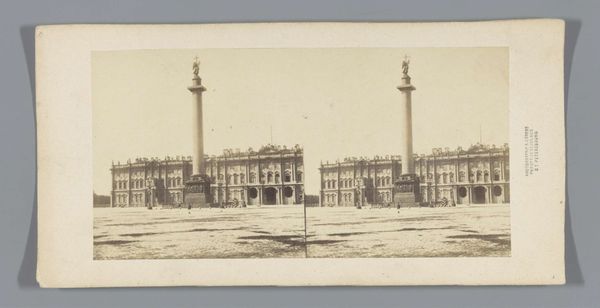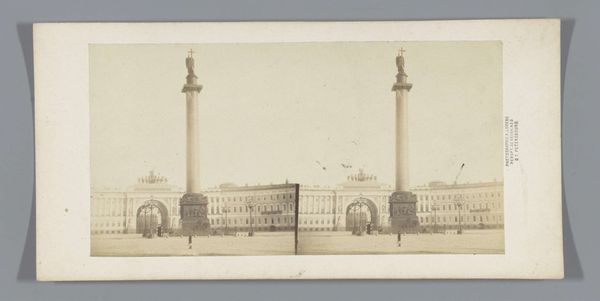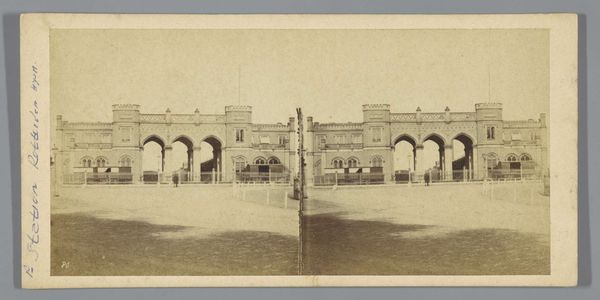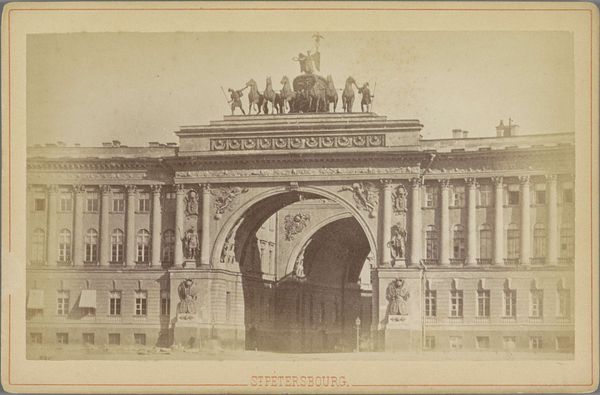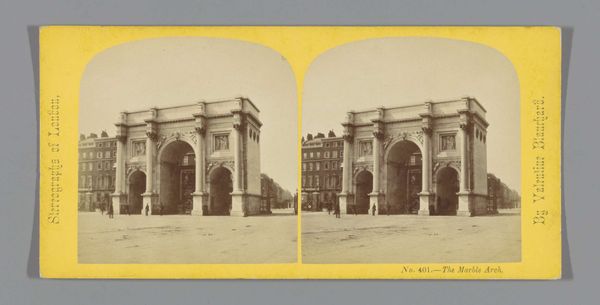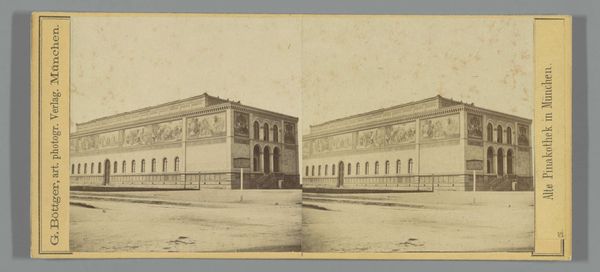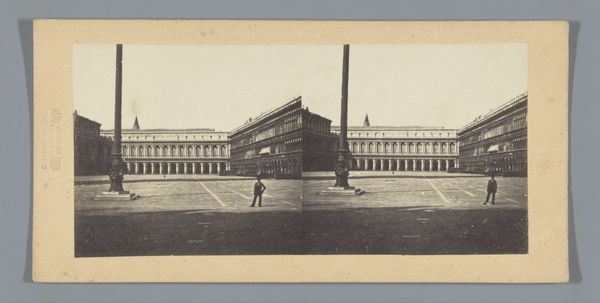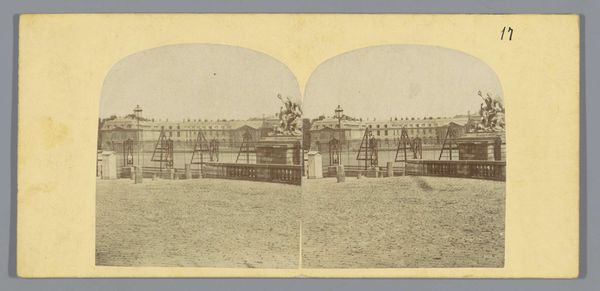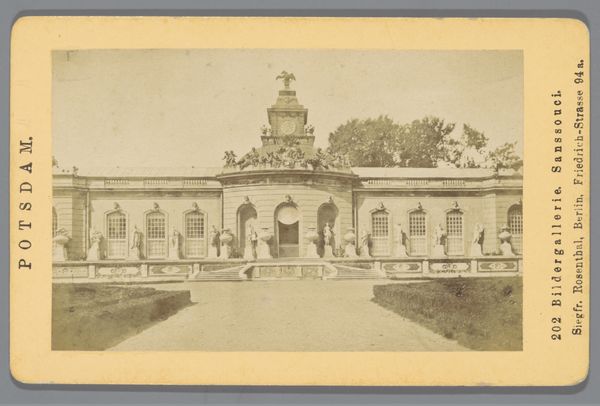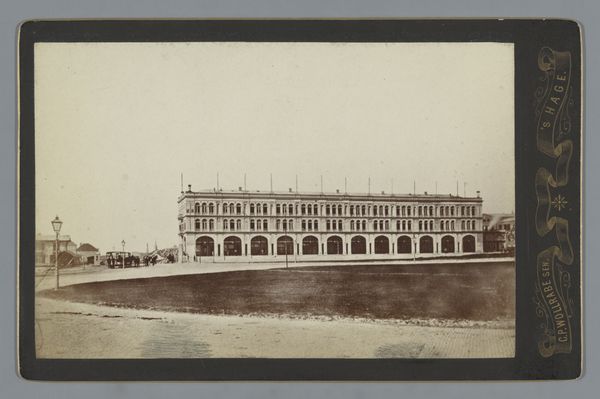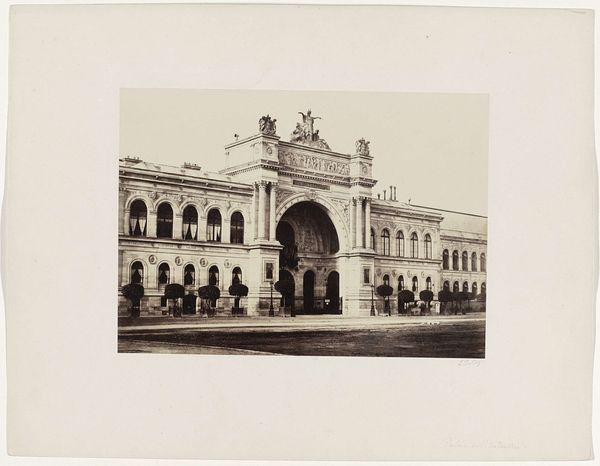
Gezicht op de triomfboog van het gebouw voor de Generale Staf aan het Paleisplein in Sint-Petersburg c. 1860 - 1880
0:00
0:00
print, photography, site-specific, gelatin-silver-print
# print
#
photography
#
ancient-mediterranean
#
site-specific
#
gelatin-silver-print
#
cityscape
#
realism
Dimensions: height 85 mm, width 170 mm
Copyright: Rijks Museum: Open Domain
Editor: This gelatin-silver print, titled "Gezicht op de triomfboog van het gebouw voor de Generale Staf aan het Paleisplein in Sint-Petersburg," was captured by Alfred Lorens sometime between 1860 and 1880. I find the photograph’s sheer symmetry captivating. What strikes you about this piece? Curator: The architectural monument is viewed with a lens of classical purity, but one should remember that such idealism is not divorced from ideology. What visual devices amplify this impression of classical purity? Editor: Well, the perfect symmetry is undeniable. The matching arches and flanking columns are like a mirror image. Also, the rooftop sculpture echoes that symmetry. Curator: Precisely. And consider the tonal range of this gelatin-silver print. Notice the restricted palette and how this absence of strong contrast serves to underscore the regularity of forms? What effect does this regularity create, especially coupled with the symmetrical composition? Editor: It creates a sense of stability and permanence. The uniformity gives it an almost… mathematical quality. There's also something about the perspective, perhaps how the space is flattened. Curator: Observe the framing, the use of light, the deliberate construction of space itself. Lorens focuses not on the gritty reality of the city, but on the idealised forms. How does the artistic license impact our viewing? Editor: It’s definitely a stylized representation. I hadn’t considered how much of a deliberate construction it is, focusing on form above all else. Curator: The camera, here, acts less as a recorder and more as an interpreter of form and proportion. Editor: I'm going to pay much closer attention to the forms and shapes that the photographers chooses in their artworks. Thanks for your expertise. Curator: And I am glad you could join me in analyzing the architecture and structure.
Comments
No comments
Be the first to comment and join the conversation on the ultimate creative platform.
